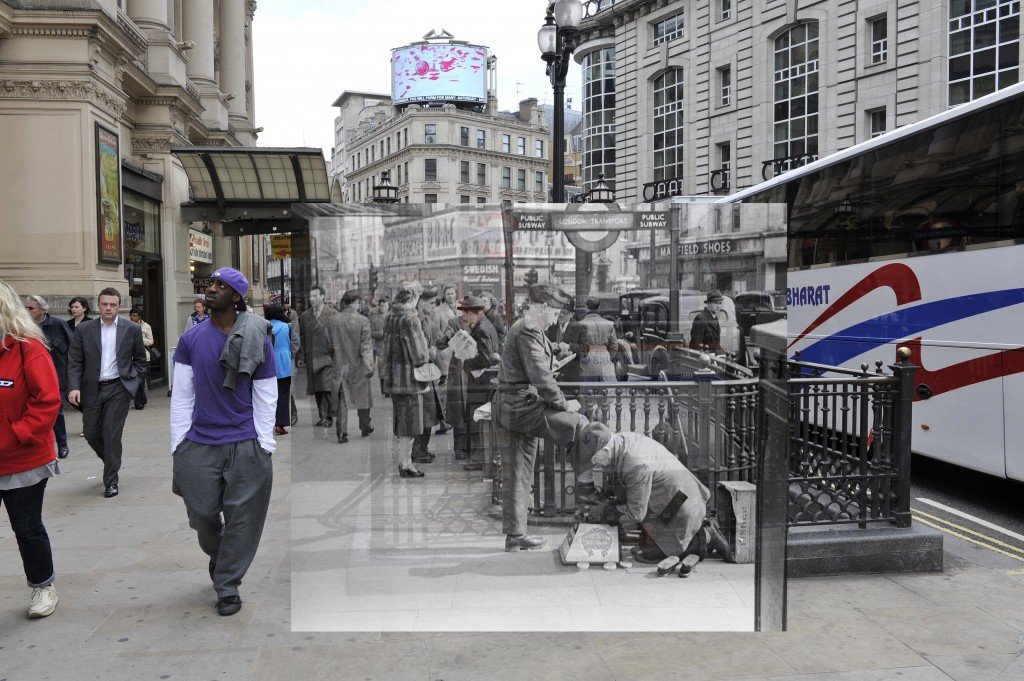May 28, 2015
Antony Robbins, the Director of Communication at the Museum of London, began his address at our last Social Speakeasy by saying the following:
“This evening I’m going to let you in on a little secret, I’m going to tell you an inappropriate story, if you’re good I might sing and at the very end of it, and I’m going to show you some photographs that I’ll only be showing this group.”
Intrigued? So were we. Antony had our rapt attention throughout the journey he took us on, one that went from the museum in Cripplegate to the deep level shelters under Clapham to a Roman funeral outside Marks & Spencer in Shoreditch.
More importantly, it was a journey that took us from the museum as it was traditionally to what it is today. Content (ie. Exhibitions) used to be at the heart of everything the museum did.
Now it’s audiences and how they engage with and share that content. As Antony so eloquently put it, we are living in the age of “social magpies”. We want to curate on our phones, at home, on our laptops and mobile phones.
Audience lead digital transformation
In order to facilitate that, the Museum of London had to give away control. They had to extend the boundaries of the museum far beyond the physical building to meet the needs of modern audiences and the only way to do this effectively was through digital transformation.
“Museums have two competing objectives,” Antony explained, “education and footfall. Making artefacts available whilst preserving them for the next generation.”
“Digital allows us to get our content out onto the streets of London and available all over the world via online. Through digital we can work with our cooler, more collected, digitally literate, leading audience but at the same time we can conserve and preserve the artefacts that we have collected and curated,” he said.
The first step in this transformation was knowing their audiences and what they wanted.
“To know our audience, we put ourselves in their shoes. We built an audience segmentation strategy three years ago that informs almost everything we do. In social in particular, we are trying to target two leading audiences – ‘Cultural Connoisseurs’ and ‘London Insiders.’”
Antony explained that these groups are quite happy to try new things. They want to see content, but they want exclusive content online and offline.
They want to be in a museum free of children and tourists, but at the same time the Museum of London was trying to grow its numbers of kids and tourists. The best way to dissolve this tension was to move the museum to locations all over London using digital.
Taking the museum to the streets digitally
The Museum launched its Streetmuseum app in 2010 which used augmented reality and geo tagging to guide users to various sites in London where historical images appear on screen like the one below.

“This is the Museum of London in your pocket,” said Antony. “If you don’t want to go to the museum, you can have little museum experiences whenever you want. To date the app has been downloaded half a million times against an initial target of 5,000. It’s really helped build the brand.”
Following the success of Streetmuseum, Streetmuseum Londinium was launched. The app shows a map of the city under Roman rule with numerous pins highlighting ancient artefacts found in London, which can be digitally excavated using your finger to unearth them. The app takes Streetmuseum a step further by overlaying video, rather than stills – this time of Roman London – over the present views today.
The app also features 3D models of key buildings in Roman London, as well as images of modern day excavations in the capital. A slider is included on the map to move between Roman and modern London and see how it has changed over 2,000 years:
Creating a culture of digital experimentation
Core to the success of the museum’s digital transformation has been convincing the organisation to embrace a culture of digital experimentation.
Antony was able to do this by adopting a risk-based approach informed by the audience insights their research revealed.
“You have to embrace and measure the risk and if it goes wrong, you have to move on, you move on together and don’t operate in a ‘blamecopter’. It took some convincing to go down the route of augmented reality, but the results speak for themselves,” Antony said.
The digital future of the museum has never looked brighter. Among other things Antony shared some secrets to do with relocating the museum and making it the UK’s first 24-hour museum by 2021. The museum is also working with edgy artists who are digital natives like explorer / photographer Lucinda Granger to create compelling, shareable content.
As Antony so rightly put it, we are all curators now. Brands and organisations that want to embrace digital transformation need to realise that and ensure that their audiences are at the heart of everything they do or face missing out on the wonderful opportunity digital provides to market to a global audience.[/vc_column_text][/vc_column][/vc_row][vc_row][vc_column width=”1/1″][dt_small_photos height=”210″ margin_top=”10″ margin_bottom=”10″ number=”12″ orderby=”recent” category=”may-speakeasy”][/vc_column][/vc_row]